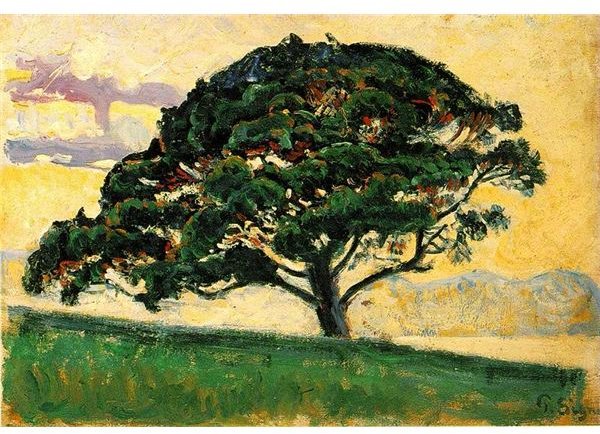Understanding the Difference Between Xylem and Phloem
A Plant’s Vascular System
Like a human’s circulatory system that processes blood through a person’s body, a plant also needs a form of circulation in order to provide nutrients throughout its body. In order to do this, plants have a vascular system which provides nutrients, water and sugars throughout the body of the plant. If plants did not have a vascular system, they would not be able to take care of themselves and would quickly die.
In order to visualize a plant’s vascular system, picture a large tree. The tree is anchored by its roots which also gather water and nutrients. Next, we have the trunk, branches, and leaves which take in sunlight to create the sugar glucose through photosynthesis. Therefore, the entire body of the tree has a purpose, whether it is collecting sunlight for energy or rooting the tree into the ground.
For the vascular system to work, a plant needs two systems that allow the transportation of nutrient and sugars. So what is the difference between xylem and phloem? Remarkably,their various purposes help the plant stay alive.
Xylem
Xylem is an interesting part of a plant in that it is its “woody” material. One reason it is “woody” is to provide support throughout the entire plant, as with a tree. One interesting tidbit about xylem is that when you cut down a tree and look at the tree trunk’s “rings”, you can see the old xylem tissue that encompassed the tree. Every xylem ring constitutes a year that a tree was alive.
throughout the entire plant, as with a tree. One interesting tidbit about xylem is that when you cut down a tree and look at the tree trunk’s “rings”, you can see the old xylem tissue that encompassed the tree. Every xylem ring constitutes a year that a tree was alive.
The primary role of xylem is to provide nutrients and water for a plant. A plant achieves this by absorbing water and nutrients through the plant’s roots, where it transports these goods throughout the plant by xylem. Since xylem is connected throughout the plant by its “vessels,” it easily passes the nutrients and water quickly and efficiently like a human’s blood vessels.
It should be mentioned that xylem operates from the bottom up. This means that it starts from the roots where it acquires water and nutrients. Xylem then “progresses” up throughout the rest of the plant to regions such as the leaves and the branches.
Phloem

Like xylem, phloem is the second part of a plant’s vascular system. Phloem is located on the outside of xylem and is also spread throughout the entire plant body. Unlike xylem, phloem is not “woody” and is usually visualized when it is stained green.
The primary function of phloem is to provide energy for the entire plant by transporting sugars such as glucose throughout the plant. A plant receives light from the sun through its leaves and converts the sun’s energy into a sugar called glucose. Phloem takes this glucose and transports the energy by focusing on a top-down method. Unlike xylem, which has a bottom up method, phloem first starts from the leaves and later travels throughout the entire plant until it reaches the bottom of the plant’s roots.
One interesting fact about phloem is that it can be thought of as the “live” part of a plant’s vascular system. Unlike xylem, which dies after a year, phloem is always alive. Without phloem, a plant would not be able to transport its converted energy to other parts of its body.
So in review, what is the difference between xylem and phloem? We have two systems that help contribute to a plant’s nutrition. These differences are quite important when determining the foundation of the plant as well as the maintenance and upkeep of a plant’s health.
References
Sources:
Farabee, M.J. “Plants and Their Structure.” https://www.emc.maricopa.edu/faculty/farabee/biobk/biobookplantanat.html
Rader, Andrew. “Plants.” https://www.biology4kids.com/files/plants_xylemphloem.html
Images:
DXLINH.“The Tangent Surface of Coffee Tree’s Trunk.” https://commons.wikimedia.org/wiki/File:The_tangent_surface_of_coffee_tree’s_trunk.jpg
Nikolang. “Celestia Sun.” https://commons.wikimedia.org/wiki/File:Celestia_sun.jpg
Signac, Paul. Le Pin. https://commons.wikimedia.org/wiki/File:Paul_Signac_Le_Pin_Saint_Tropez.jpg
